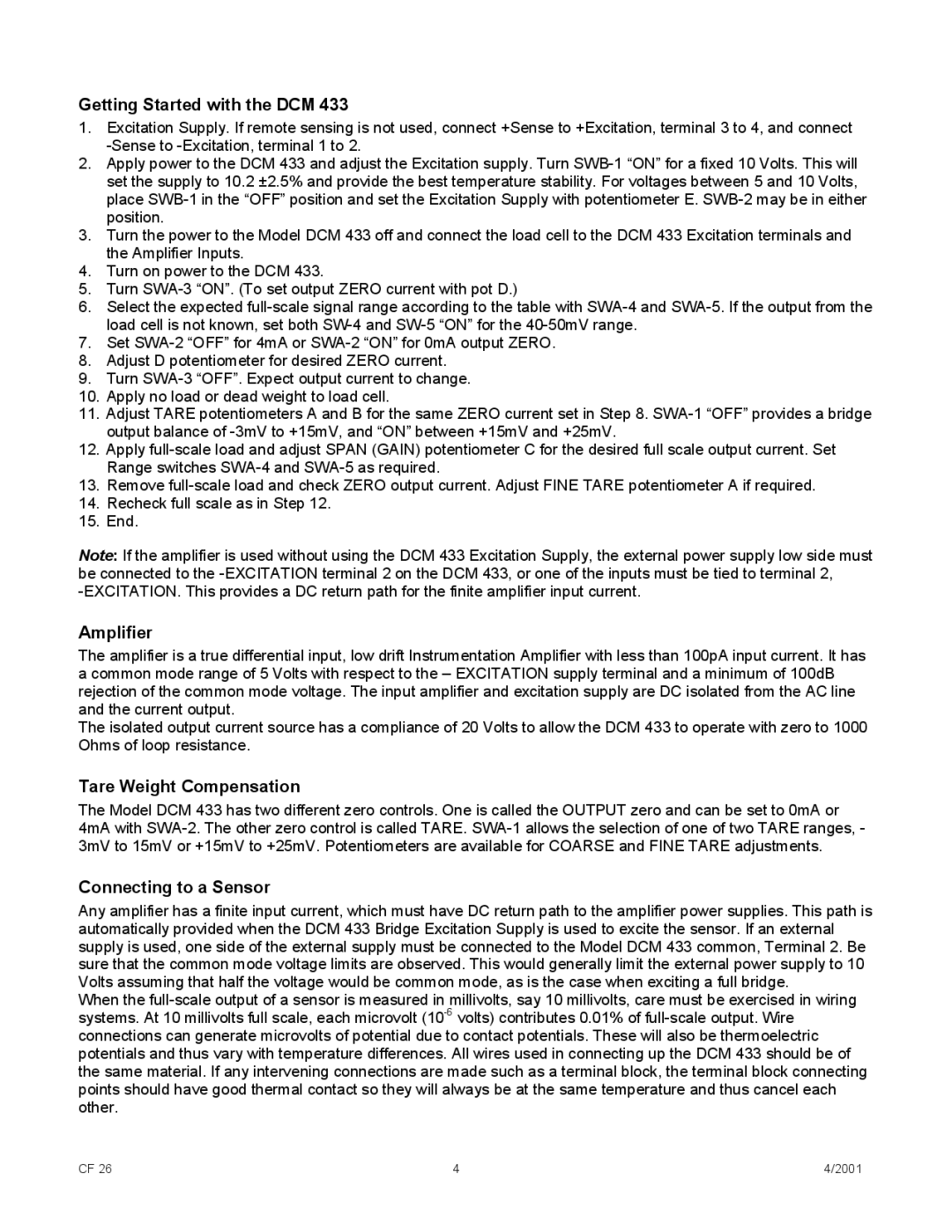Getting Started with the DCM 433
1.Excitation Supply. If remote sensing is not used, connect +Sense to +Excitation, terminal 3 to 4, and connect
2.Apply power to the DCM 433 and adjust the Excitation supply. Turn
3.Turn the power to the Model DCM 433 off and connect the load cell to the DCM 433 Excitation terminals and the Amplifier Inputs.
4.Turn on power to the DCM 433.
5.Turn
6.Select the expected
7.Set
8.Adjust D potentiometer for desired ZERO current.
9.Turn
10.Apply no load or dead weight to load cell.
11.Adjust TARE potentiometers A and B for the same ZERO current set in Step 8.
12.Apply
13.Remove
14.Recheck full scale as in Step 12.
15.End.
Note: If the amplifier is used without using the DCM 433 Excitation Supply, the external power supply low side must be connected to the
Amplifier
The amplifier is a true differential input, low drift Instrumentation Amplifier with less than 100pA input current. It has a common mode range of 5 Volts with respect to the – EXCITATION supply terminal and a minimum of 100dB rejection of the common mode voltage. The input amplifier and excitation supply are DC isolated from the AC line and the current output.
The isolated output current source has a compliance of 20 Volts to allow the DCM 433 to operate with zero to 1000 Ohms of loop resistance.
Tare Weight Compensation
The Model DCM 433 has two different zero controls. One is called the OUTPUT zero and can be set to 0mA or 4mA with
Connecting to a Sensor
Any amplifier has a finite input current, which must have DC return path to the amplifier power supplies. This path is automatically provided when the DCM 433 Bridge Excitation Supply is used to excite the sensor. If an external supply is used, one side of the external supply must be connected to the Model DCM 433 common, Terminal 2. Be sure that the common mode voltage limits are observed. This would generally limit the external power supply to 10 Volts assuming that half the voltage would be common mode, as is the case when exciting a full bridge.
When the
CF 26 | 4 | 4/2001 |
